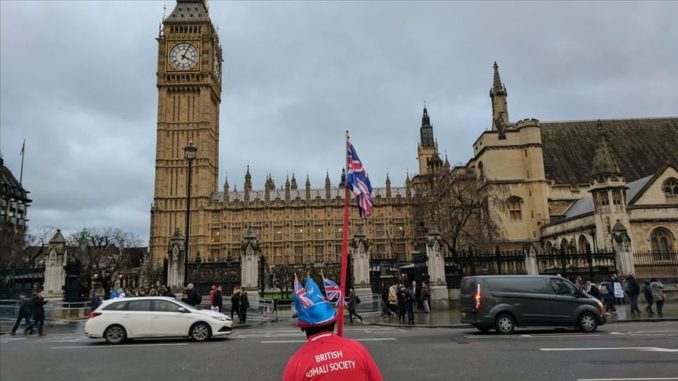
Brexit talks between the U.K. and the EU officials have reached a “deadlock” after negotiations over the weekend, a statement from the British government said Monday as a crucial week in the House of Commons looms.
The statement from 10 Downing Street came after Prime Minister Theresa May spoke with European Commission President Jean-Claude Juncker on Sunday following the latest series of negotiations failed to find a breakthrough on the “backstop” clause of the withdrawal agreement.
The backstop is a mechanism that would keep the U.K. aligned with the EU until a permanent solution is found to avoid a hard border in the island of Ireland. It is the main sticking point for the majority of British lawmakers.
The original deal was rejected on Jan. 15 by a majority of 230 votes in the parliament, giving the prime minister the worst defeat for a sitting government for decades.
The talks are still continuing on Monday, only a day before the withdrawal agreement, which May said the backstop would be replaced by alternative arrangements, will see a second vote in the parliament on Tuesday.
Crucial votes ahead
March 12:
British parliament will vote on May’s deal again and if the deal passes this time around, the U.K. will leave the EU on March 29 with that deal.
If the deal is voted down once again, on the following two days the lawmakers are expected to discuss and vote on two amendments.
March 13:
MPs will vote whether to leave without a deal on March 13.
If they vote to leave with no deal, the U.K. will have left the EU on March 29 and since there will be no deal in effect it is unclear what will happen in the immediate aftermath.
But if the lawmakers reject to leave the EU without a deal, another vote will be held on Thursday, March 14.
March 14:
British parliament will vote whether the country needs more time for an orderly exit.
If the MPs agree to extend Article 50 and therefore the negotiation process, the talks will be extended for a period of time subject to agreement with the EU.
Irish border
As the UK will leave the bloc in March 2019, the border between Northern Ireland — a U.K. territory — and the Republic of Ireland will remain as the only land border between the U.K. and the EU.
The border at the moment is invisible, and people, goods and services can travel through it freely. But as the U.K. leaves the EU, the border, technically, will need some sort of checks.
Due to the sensitive nature of the region and because the free passage is one of the crucial articles of the 1998 Belfast Agreement, the U.K., EU, Northern Ireland and Ireland all reject the idea of returning to a hard border where checkpoints and customs buildings will need to be installed.
The border issue has been one of the thorniest in Brexit talks.
Backstop
The main disagreement over the border issue has been over an EU-suggested backstop — keeping Northern Ireland in the EU single market and the Customs Union after Brexit until a solution is found — because it would create a sort of a border within the U.K. in the Irish Sea.
May has said they would not give in to any solution that would divide the U.K. and negotiated for a U.K.-wide backstop.
However, this concession from the EU failed to impress the British parliament as the new type of backstop had no clear end date and it can not be ended unilaterally by the parties.
The U.K. is set to leave the bloc on March 29 as a result of a 2016 referendum where British voters decided to leave the union after more than 40 years of membership
BY ANADOLU AGENCY
